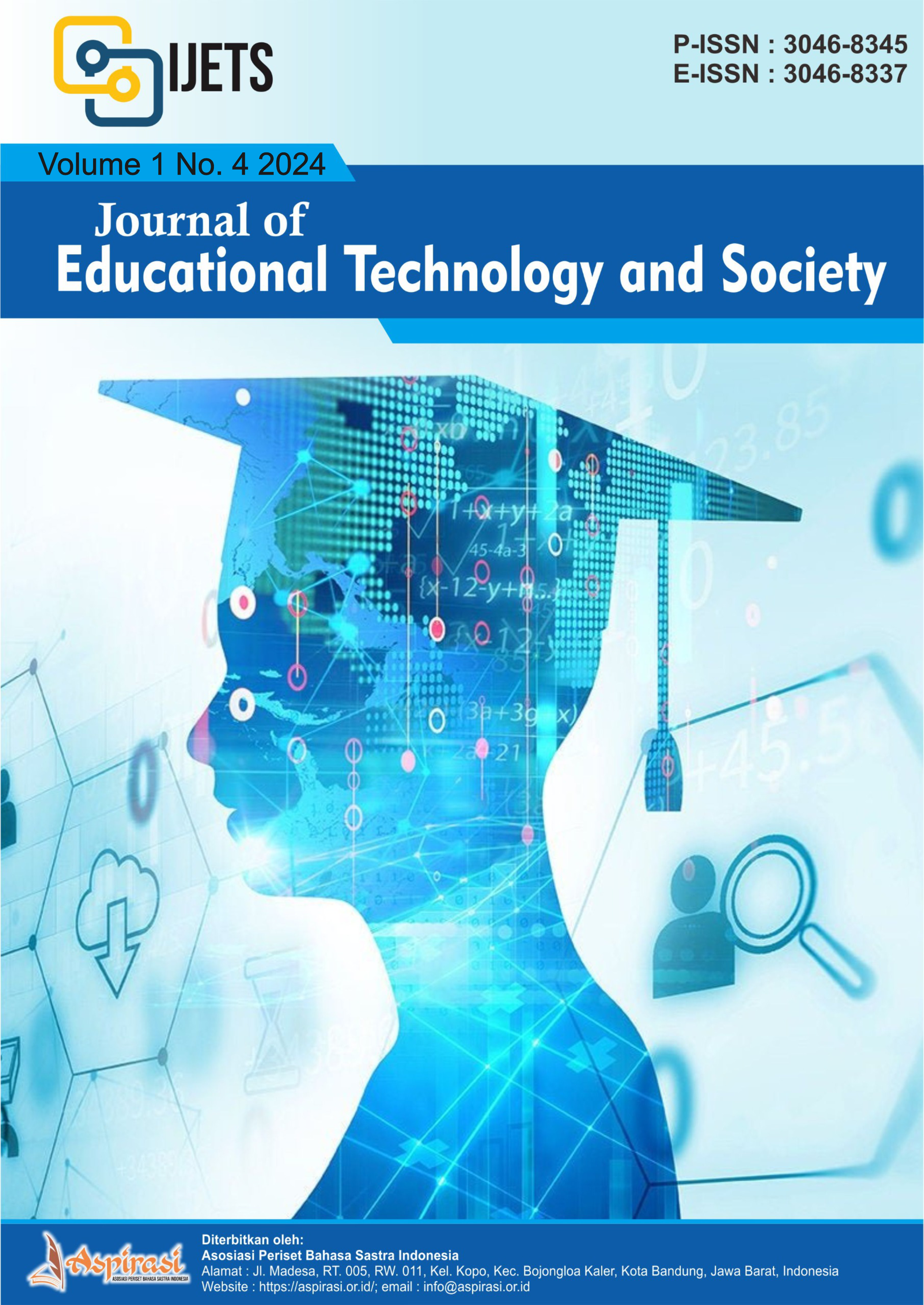An Analysis Study of the Utilisation of Digital Learning Media in the Implementation of Microteaching Biology
DOI:
https://doi.org/10.61132/ijets.v1i4.166Keywords:
Microteaching, Technology, Media, BiologyAbstract
Microteaching is a simulation or training for prospective teachers to explore the ability of skills in teaching that combines the components of learning. The purpose of this study was to analyse the implementation of microteaching learning in terms of the use of various biology learning media with a touch of technology. The method used is descriptive quantitative with observation sheets and interviews. This research uses a squential explanatory design that combines quantitative and qualitative methods sequentially the first stage of collecting and analysing quantitative data followed by collecting and analysing qualitative data to help explain quantitative results. The results of the study regarding the pattern of using technology-based learning media showed that PowerPoint 92% and learning videos 78% were the most widely used media in microteaching practice. While the level of effectiveness of the media used varies. The 4.6% digital microscope showed a high level of effectiveness even though the frequency of use was still low. This indicates that high technology-based learning media has considerable potential in improving the quality of learning. Furthermore, the analysis of students' digital competence shows that 70% of students have good to very good mastery of technology. Furthermore, creativity in media development shows an even distribution while time management is still a challenge for 35% of students at a sufficient or insufficient level. The use of technology-based learning media in micro teaching has considerable potential, but still faces several challenges. A systematic and comprehensive approach is needed to optimise the use of technology in developing the teaching competence of prospective biology teachers.
References
Admiraal, W., Louws, M., Lockhorst, D., Paas, T., Buynsters, M., Cviko, A., ... & Kester, L. (2017). Teachers in school-based technology innovations: A typology of their beliefs on teaching and technology. Computers & Education, 114, 57–68. https://doi.org/10.1016/j.compedu.2017.06.013
Allen, D., & Ryan, K. (1969). Microteaching reading. Massachusetts: Addison-Wesley.
Braun, V., & Clarke, V. (2006). Using thematic analysis in psychology. Qualitative Research in Psychology, 3(2), 77–101. https://doi.org/10.1191/1478088706qp063oa
Brown, G. (1976). Microteaching: A programme of teaching skills. London: Methuen.
Creswell, J. W., & Creswell, J. D. (2017). Research design: Qualitative, quantitative, and mixed methods approaches. Sage Publications.
Danday, B. A. (2019). Active vs. passive microteaching lesson study: Effects on pre-service teachers’ technological pedagogical content knowledge. International Journal of Learning, Teaching and Educational Research, 18(6), 181–200.
Danday, B. A., & Monterola, S. L. C. (2019). Effects of microteaching multiple-representation physics lesson study on pre-service teachers' critical thinking. Journal of Baltic Science Education, 18(5), 692–707.
Ertmer, P. A., & Ottenbreit-Leftwich, A. T. (2010). Teacher technology change: How knowledge, confidence, beliefs, and culture intersect. Journal of Research on Technology in Education, 42(3), 255–284. https://doi.org/10.1080/15391523.2010.10782551
Etikan, I., Musa, S. A., & Alkassim, R. S. (2016). Comparison of convenience sampling and purposive sampling. American Journal of Theoretical and Applied Statistics, 5(1), 1–4. https://doi.org/10.11648/j.ajtas.20160501.11
Fausan, M. M., Hakim, S., & Pujiastuti, I. P. (2024). Transformation of technology literacy and creative thinking skills of prospective biology teachers through interactive microteaching. Journal of Education Research, 5(4), 5229–5238.
Fernandez, M. L. (2010). Investigating how and what prospective teachers learn through microteaching lesson study. Teaching and Teacher Education, 26(2), 351–362. https://doi.org/10.1016/j.tate.2009.09.012
Hsu, Y. S., Lin, Y. H., & Yang, B. (2017). Impact of augmented reality lessons on students’ STEM interest. Research and Practice in Technology Enhanced Learning, 12, 1–14. https://doi.org/10.1186/s41039-016-0039-z
Husnaini, H. (2022). Development of self-esteem-oriented microteaching materials for IAIN Palopo English education students. IDEAS: Journal on English Language Teaching and Learning, Linguistics and Literature, 10(1), 538–560. https://doi.org/10.24256/ideas.v10i1.2408
Ivankova, N. V., Creswell, J. W., & Stick, S. L. (2006). Using mixed-methods sequential explanatory design: From theory to practice. Field Methods, 18(1), 3–20. https://doi.org/10.1177/1525822X05282260
Jonassen, D. H. (1994). Technology as cognitive tools: Learners as designers. ITForum Paper, 1(1), 67–80.
Downloads
Published
How to Cite
Issue
Section
License
Copyright (c) 2024 International Journal of Educational Technology and Society

This work is licensed under a Creative Commons Attribution-ShareAlike 4.0 International License.





